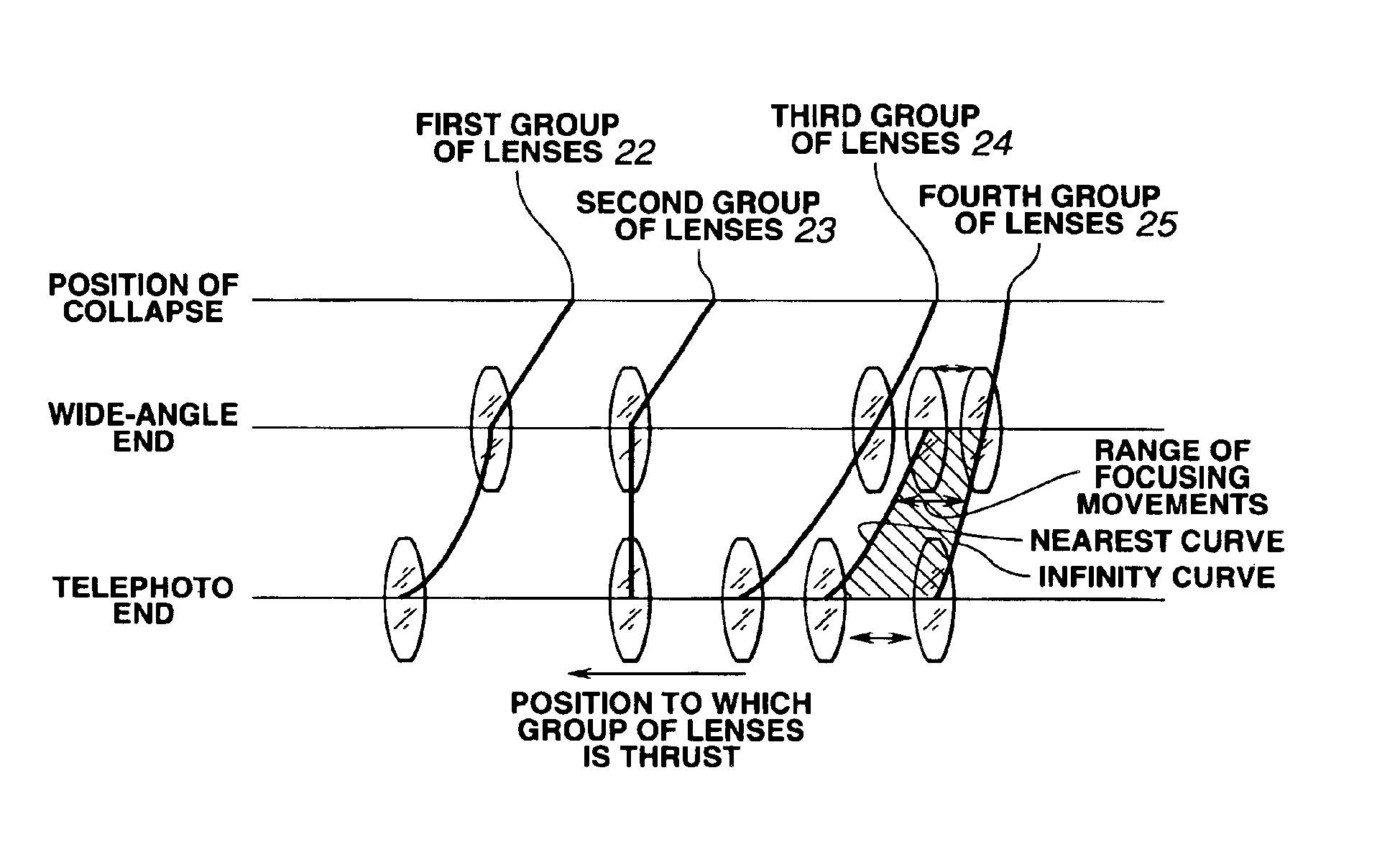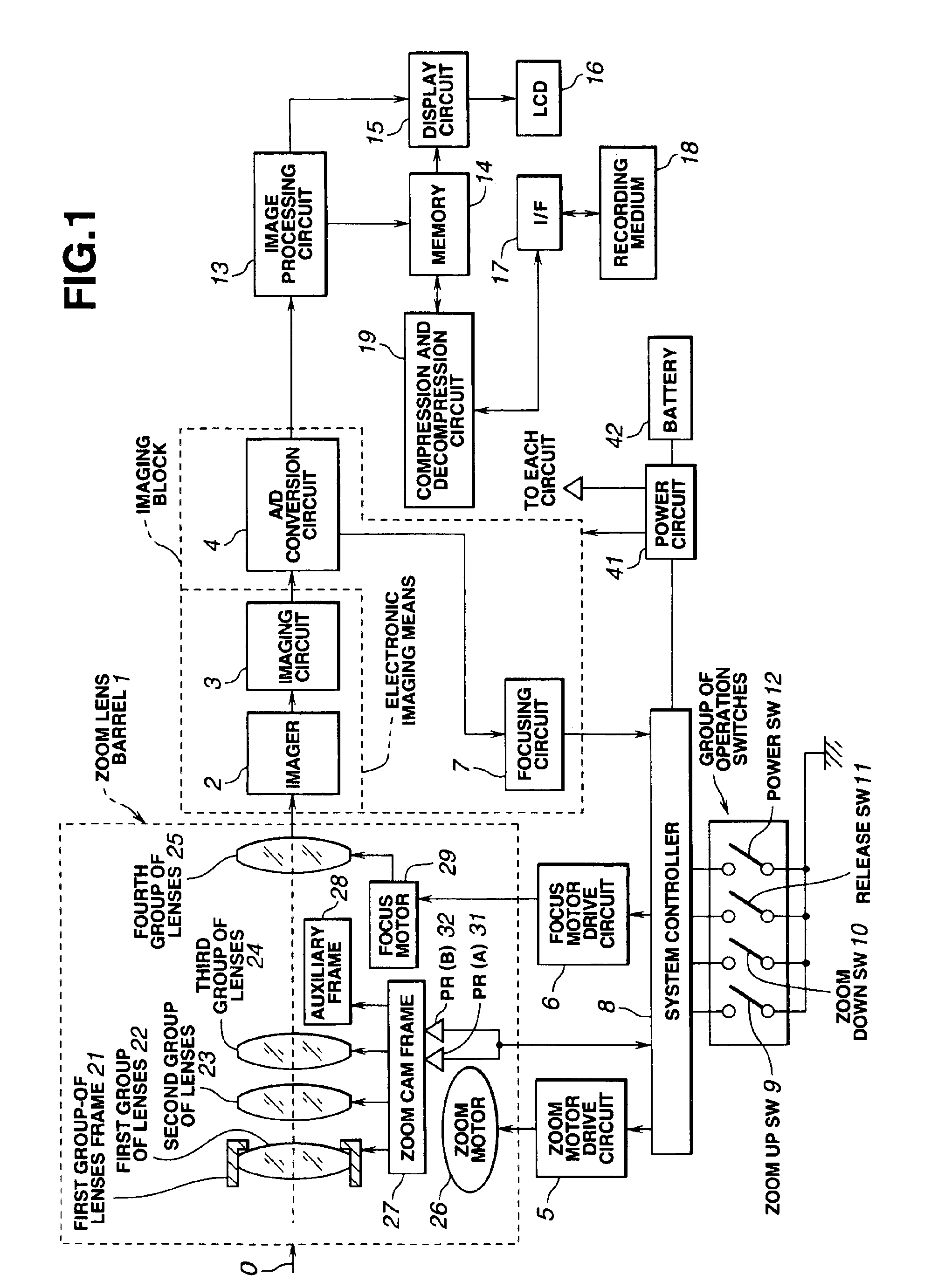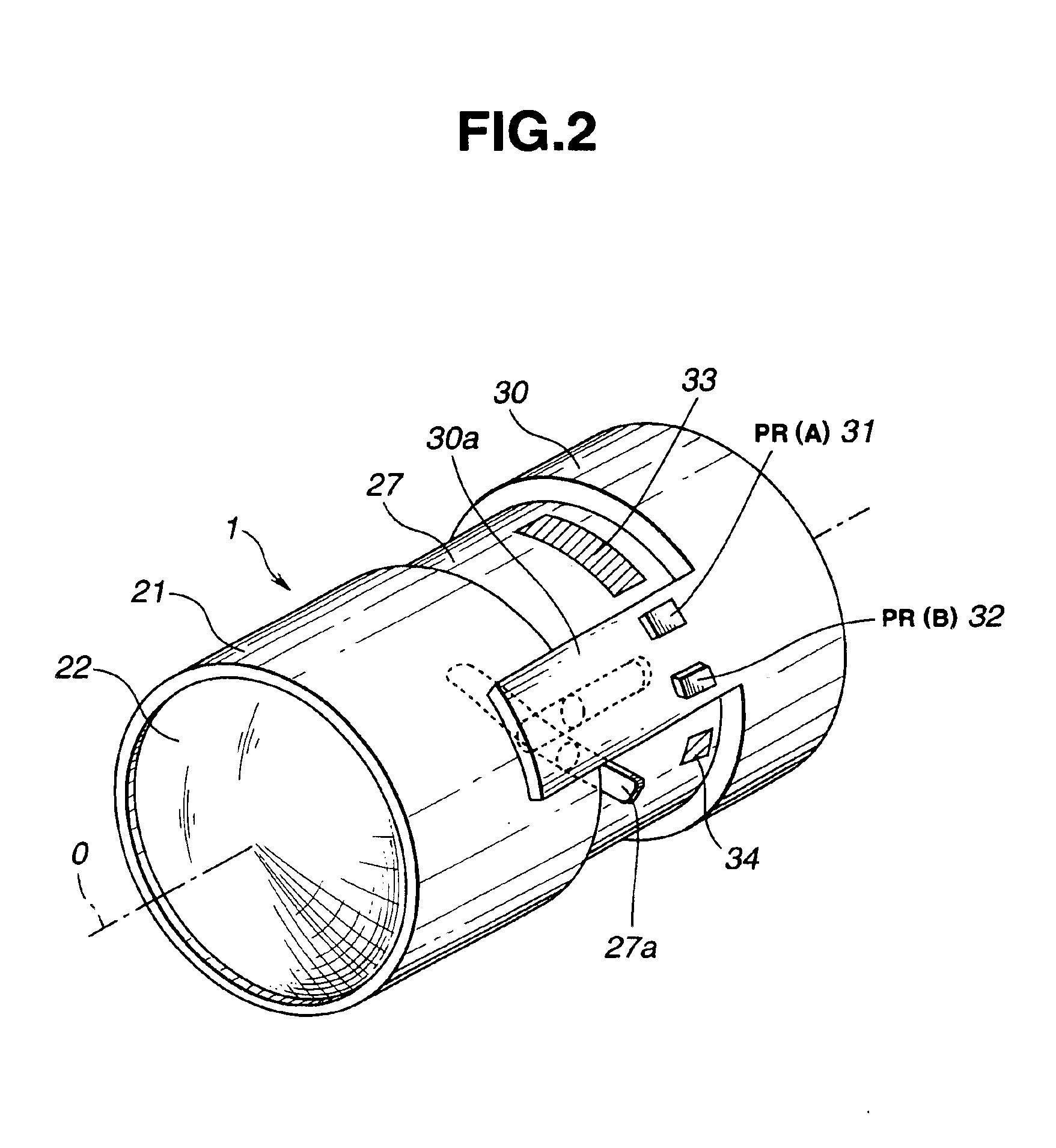Lens device for a camera with a stepping motor drive optimized for speed and power saving
a technology of stepping motor and lens device, which is applied in the field of lens device for a camera with a stepping motor drive optimized for speed and power saving, can solve the problems of inability to correct the magnitude of displacement of the front lens frame that is of a certain level or more, and may apply an unexpected extraneous force to the lens barrel holding the lens frame, so as to reduce the power consumption of the whole unit, the effect of moving faster and efficient driving and controlling
- Summary
- Abstract
- Description
- Claims
- Application Information
AI Technical Summary
Benefits of technology
Problems solved by technology
Method used
Image
Examples
Embodiment Construction
An embodiment of the present invention will be described below. Herein, an electronic camera (hereinafter called simply a camera) designed to electrically produce an image signal by utilizing an imaging device or the like is utilized for the following description.
All actions of a camera in accordance with an embodiment of the present invention are, as shown in the block diagram of FIG. 1, controlled by a system controller 8 serving as a control means. A release switch (SW) 11, a zoom up switch 9, a zoom down switch 10, and a power switch 12 which are included in a group of operation switches serving as an operating means are electrically connected to the system controller 8. The release switch 11 is used to generate a signal instructing start of imaging. The zoom up switch 9 is used to generate a signal instructing execution of a zooming up action. The zoom down switch 10 is used to generate a signal instructing execution of a zoom down action. The power switch 12 is used to generat...
PUM
 Login to View More
Login to View More Abstract
Description
Claims
Application Information
 Login to View More
Login to View More - R&D
- Intellectual Property
- Life Sciences
- Materials
- Tech Scout
- Unparalleled Data Quality
- Higher Quality Content
- 60% Fewer Hallucinations
Browse by: Latest US Patents, China's latest patents, Technical Efficacy Thesaurus, Application Domain, Technology Topic, Popular Technical Reports.
© 2025 PatSnap. All rights reserved.Legal|Privacy policy|Modern Slavery Act Transparency Statement|Sitemap|About US| Contact US: help@patsnap.com



